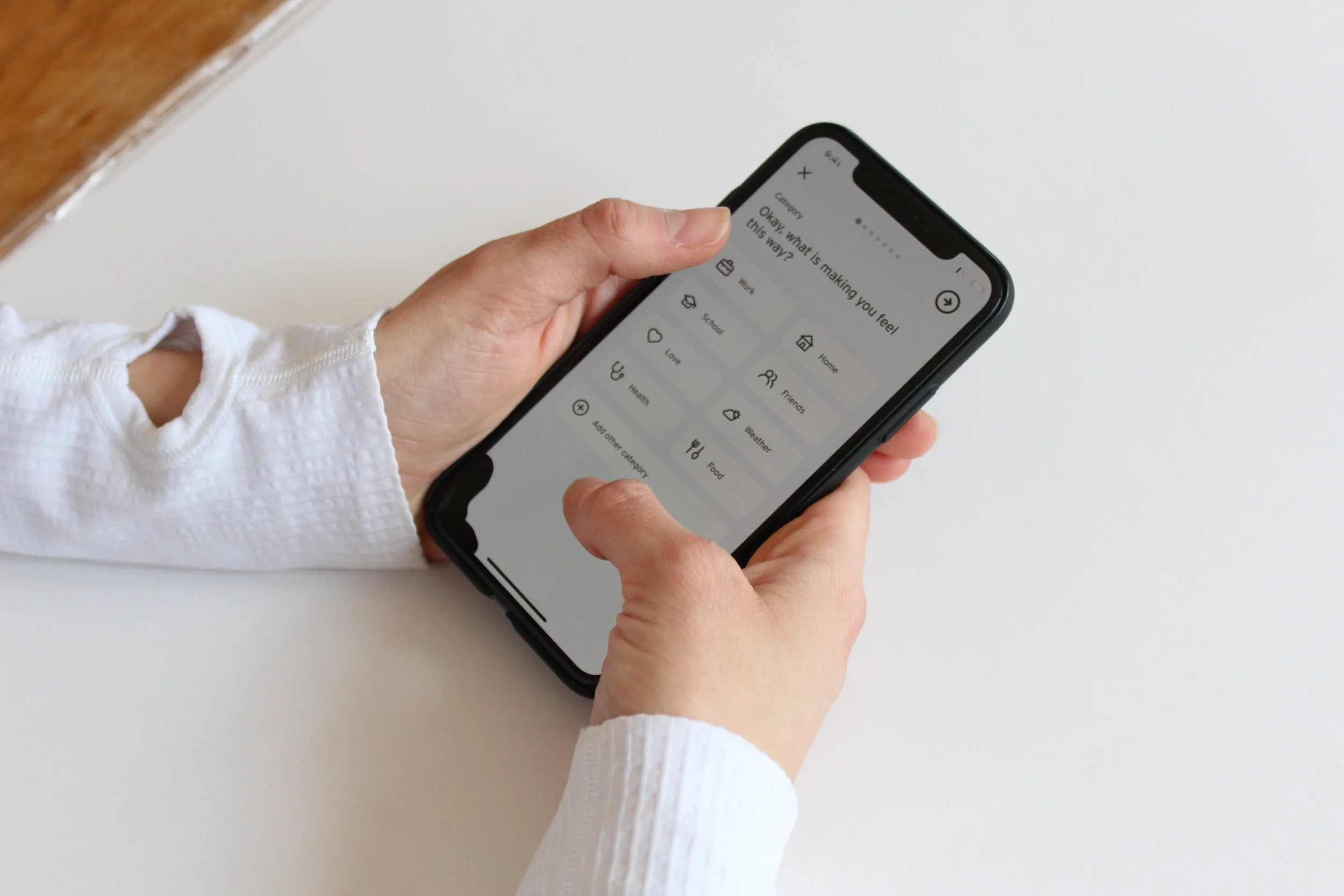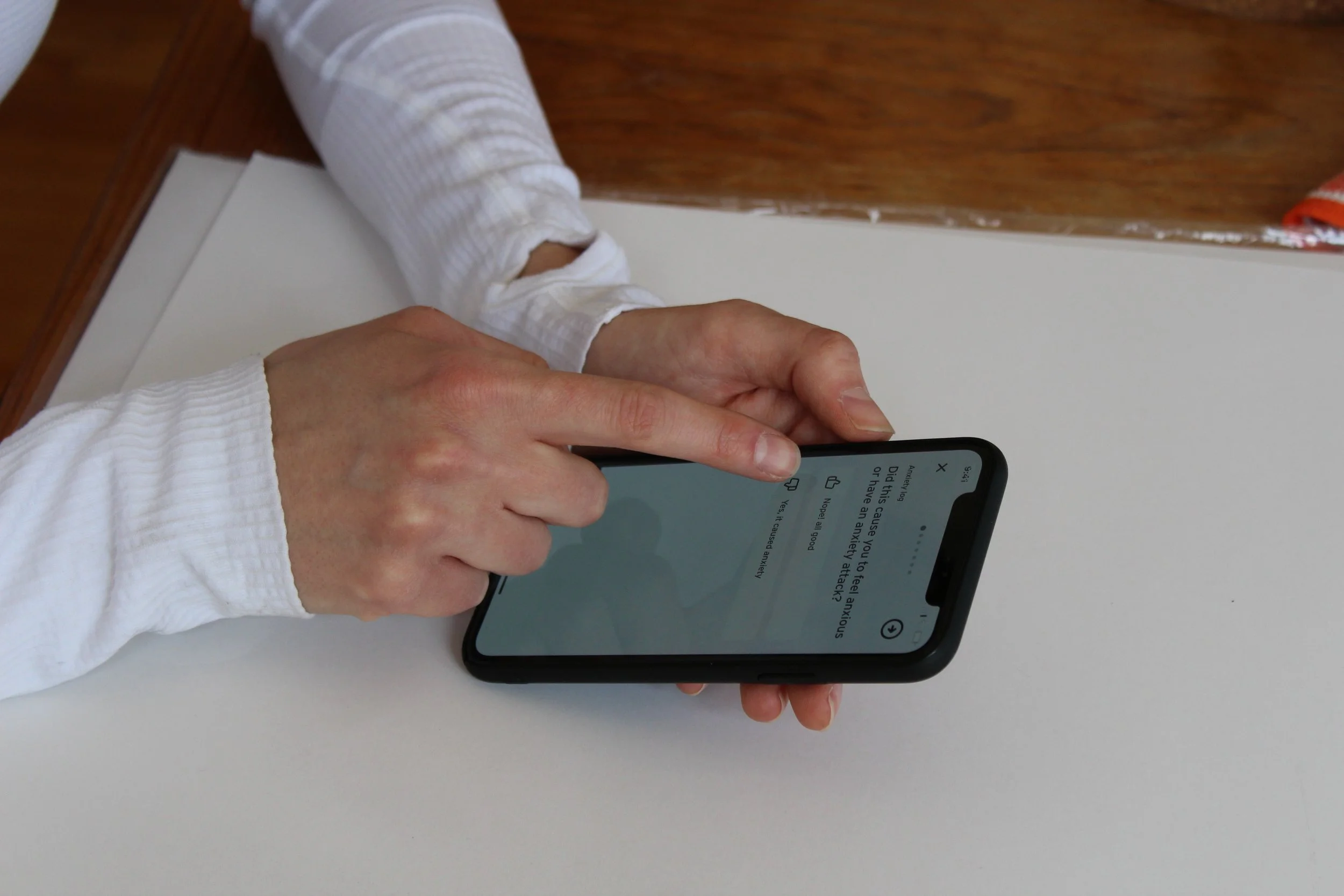
Pebble & Aura

Pebble & Aura:
a system of products for anxiety management and awareness
TIMELINE:
8 Months
Sept 2021- April 2022
PROJECT TYPE:
Fourth-year capstone project
Individual research & product
The Problem:
In 2021, 1 in every 5 adults between the ages of 20-45 was diagnosed with an Anxiety Disorder, with only 20% of these individuals receiving treatment for their disorders. This gap is due to a number of factors, namely accessibility concerns with services provided through the healthcare system, as well as a gap in the products used to manage Anxiety Disorders.

The Solution
Pebble & Aura is a system of products including a wearable device, a handheld grounding tool, and a mobile application designed to aid in the awareness and management of Anxiety Disorders. The two physical products make use of Entrainment— the body’s ability to sync internal and external rhythms— for anxiety management.
research & problem exploration
There are typically two main routes individuals take for Anxiety management. The first route is utilizing resources provided through the healthcare system such as psychotherapy, medication, and counseling. While the availability of these resources has improved, there remain several barriers to treatment, namely the desire to manage anxiety independently.
In addition to these resources, individuals struggling with anxiety often reach for products such as wearables that use biofeedback tracking to manage their disorders. Two categories of products with their shortcomings are:
Products designed for anxiety target anxiety management and awareness, but are often difficult to integrate into daily routines
Products with Anxiety related features integrate easily into routines, but lack the personalization needed for successful anxiety management

From left to right, Muse, Flow, Doppel (Anxiety focused), Apple watch, Fitbit, and Samsung watch (not anxiety focused)
To further identify challenges faced by individuals when managing anxiety, an online survey and a series of remote interviews were conducted. This brought to light insight on how individuals are currently managing anxiety and where their needs are not being met. Findings of personal and product-related challenges include:

The Research indicated an opportunity to for a solution that helps individuals struggling with anxiety to manage their disorders, is personalized to individual preferences, and is enjoyable and easy enough to use so that it encourages continuous engagement. The drivers for the design solution can be defined as the following:

Concept Development
STEP 1: AWARENESS
The design imagines anxiety management in two steps: awareness and grounding. The awareness step is tackled through a wearable device that tracks physiological symptoms of anxiety. Once the device detects anxiety, it begins to vibrate gently in the rhythm of the user’s resting heart rate, guiding them to a neutral state.
With placement requirements and internal component sizes in mind, I began ideating on the form, shape, and size of the wearable device.

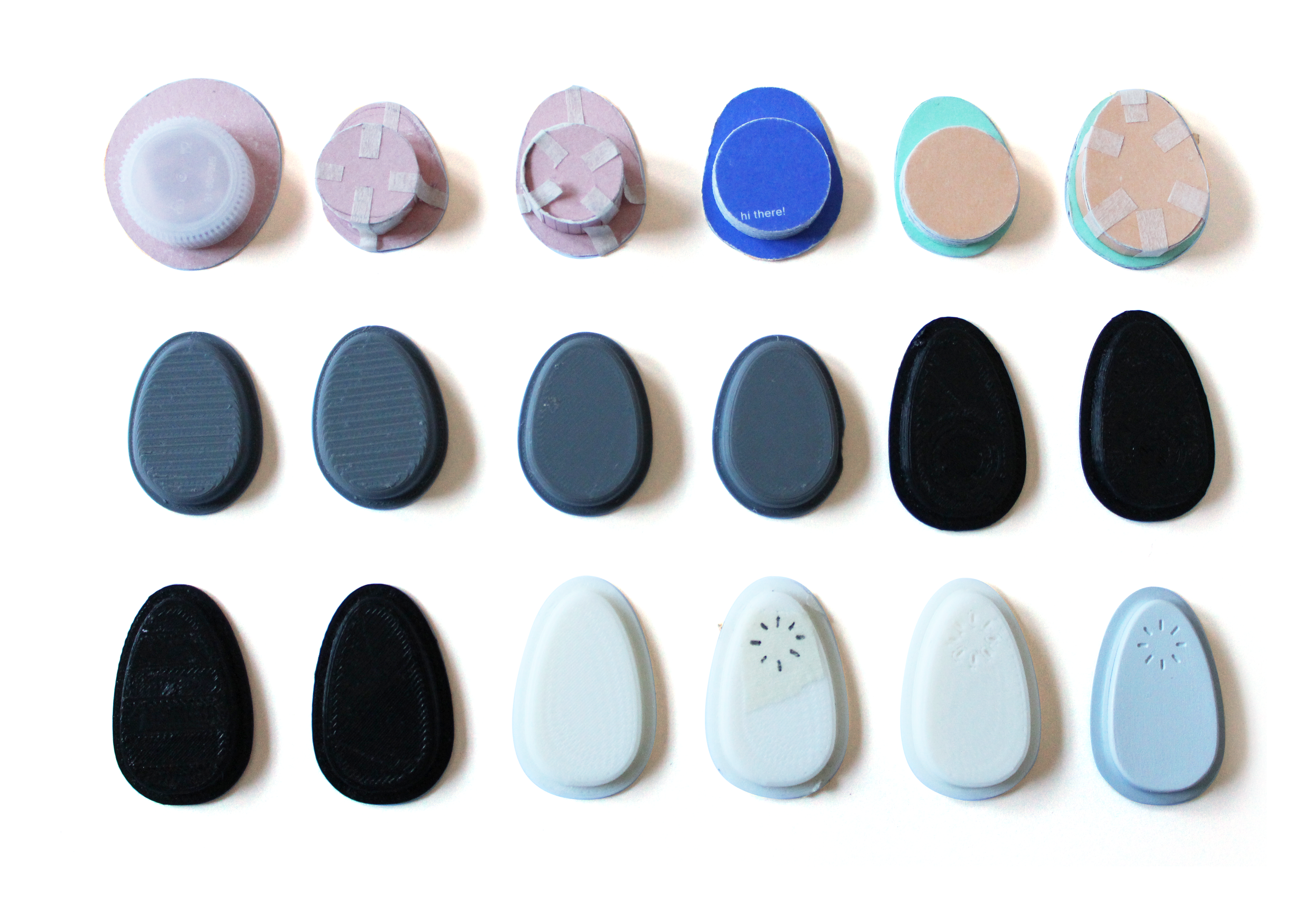
Progression of prototypes for the wearable device
Step 2: Grounding
The grounding step is done through a handheld tool that makes use of textures, sounds, and haptic vibrations to create a tactile grounding experience. The goal for this piece was to develop a form that is comfortable and calming to hold in the hands of a wide variety of users. I used basic anthropometrics to guide me in form and size explorations.
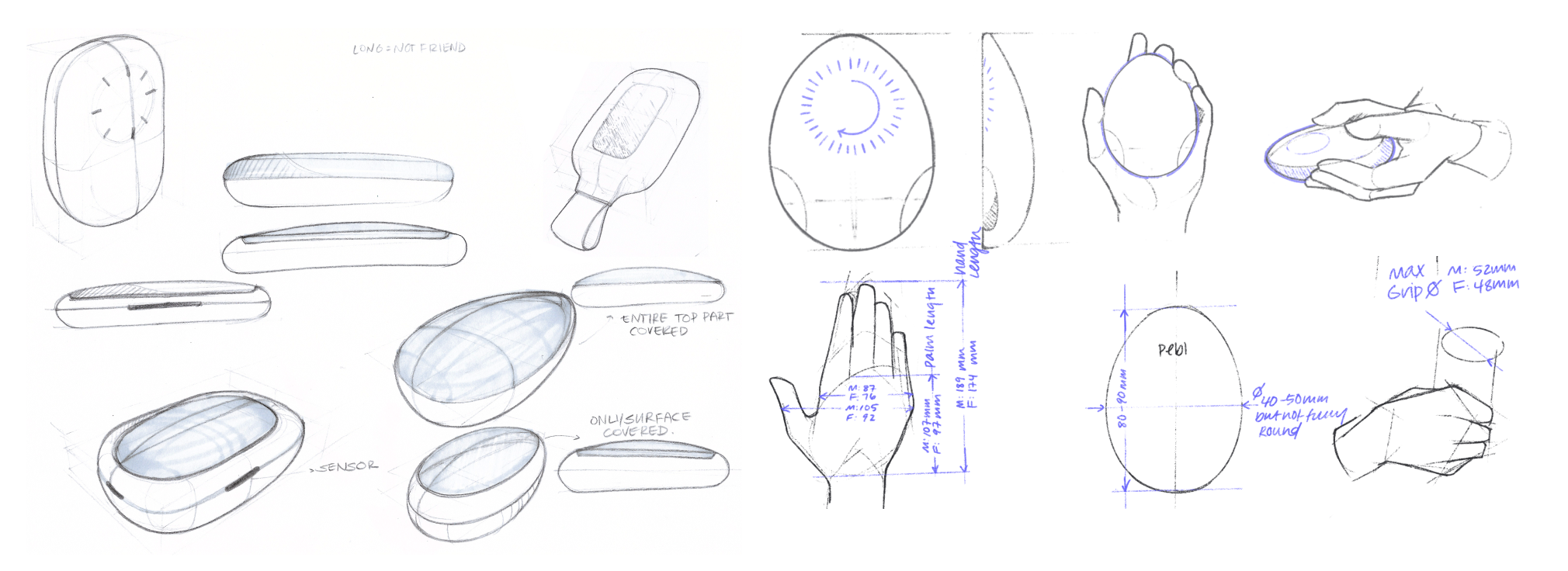

Progression of prototypes for the handheld device
The app
The final component of the solution concept is a mobile application that acts as an information hub for the wearable device and handheld tool. The app also provides users access to therapy-based activities to bring awareness to anxiety cues and symptoms, and help to develop management skills. I created wireframes and low-fidelity designs to identify key flows and pages before moving onto a low-fidelity wireframe for user testing.
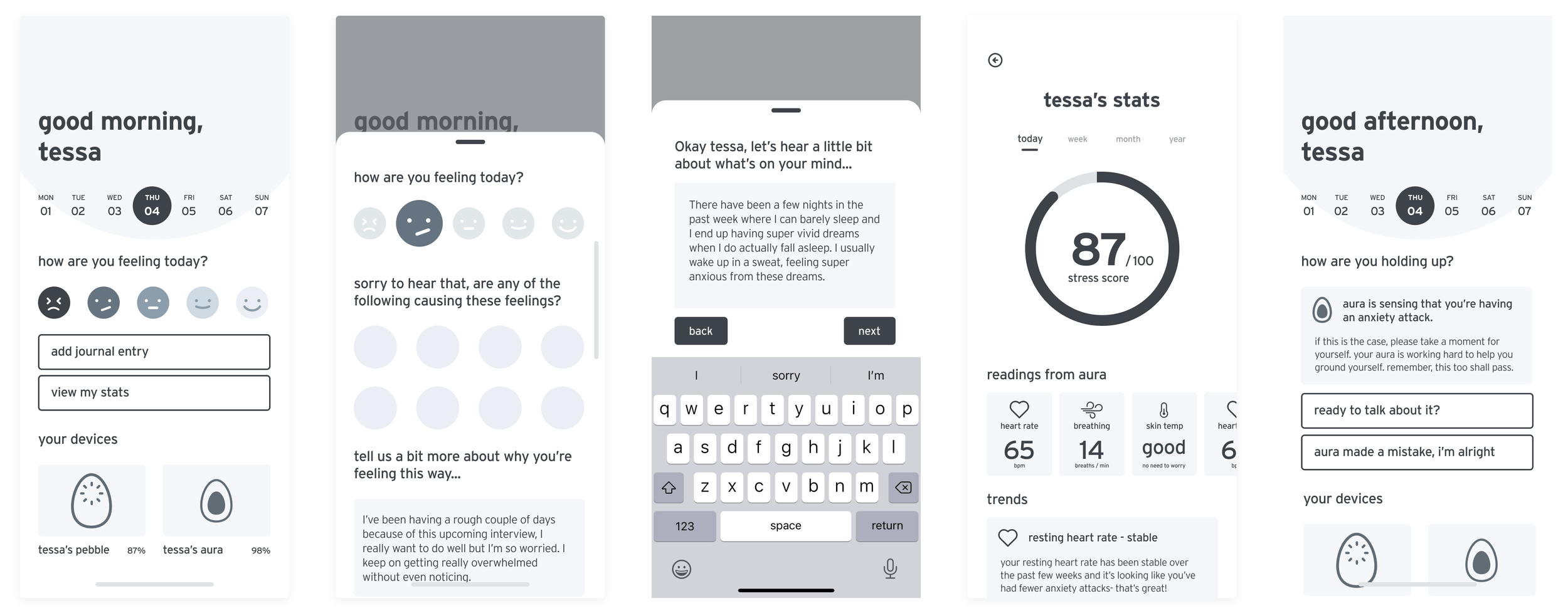
Initial exploratory wireframes
User testing wireframes
User testing and findings
In order to ensure that the wearable device was comfortable and secure enough to wear for multiple hours throughout the day, I confused a diary study where users were asked to wear a mock-device for 2-10 hours at a time and note their experience on a thorough questionnaire. This also tested the durability and ease of use of the adhesive patch that would hold the device against the users skin.
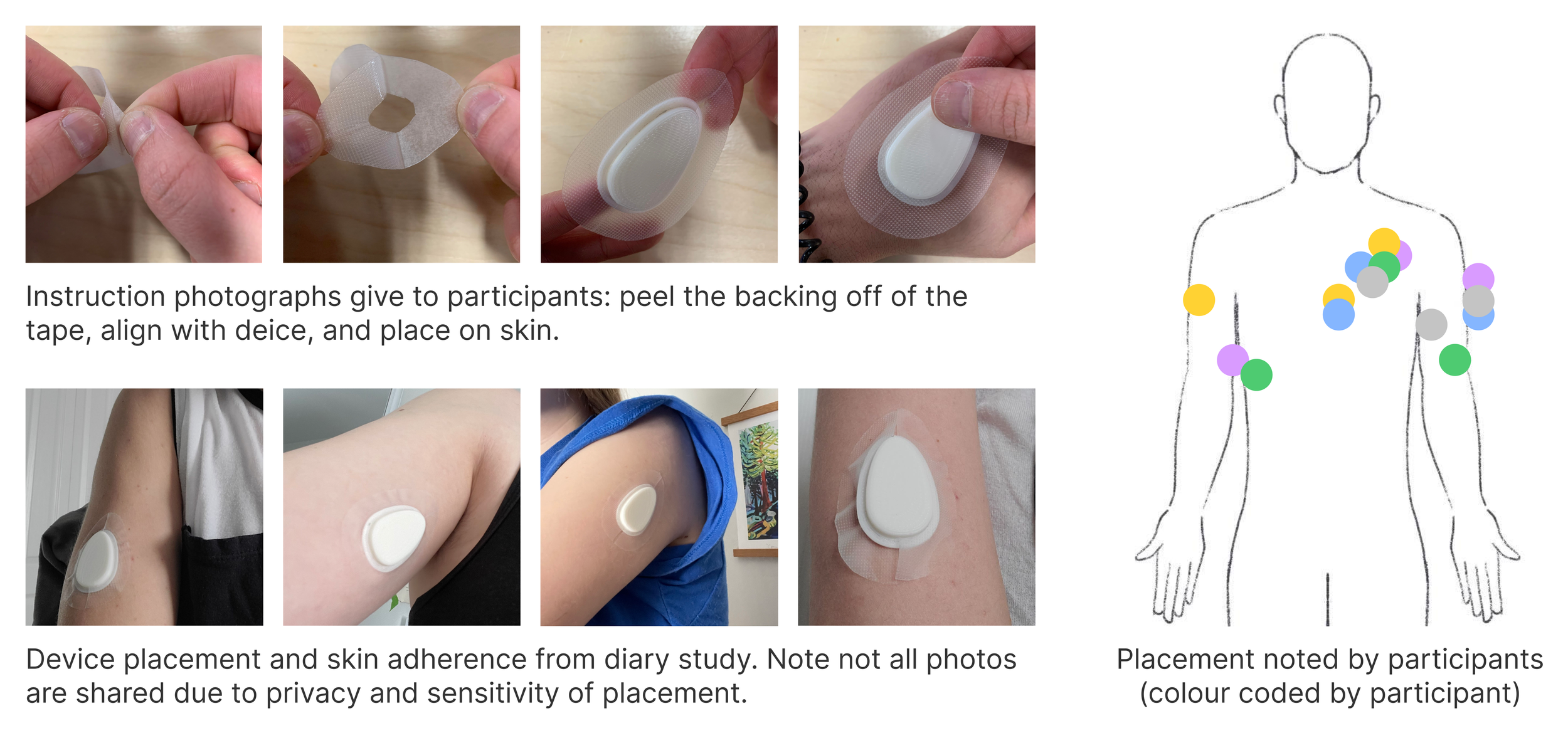
The comfort, size, and shape of the grounding tool as assessed on an ongoing basis throughout the product development, where different shapes, sizes, and textured prototypes were give to participants to hold and their reactions were noted.

Form testing with large hands

Form testing with small hands
Usability testing was also done on the low fidelity prototypes for the mobile application to test the ease of use for key flows in the application.
Takeaways:
User testing findings indicated the need for a few key adjustments before moving onto the final design for all products. Changes include:
Change in the design for the adhesive that holds the wearable to the users skin
Selection of a specific size and shape for the handheld tool
Addition of more gentle tactile patterns on the handheld tool
Change in wording and button placement in the mobile application
Concept Refinement and Model making
In order to create unity across the system, I created a mood board to guide the refinement of the visual language of the products. The two products already resemble one another in form, so it was the the material, colour, and detailed elements that would bring the system together.

During this stage I also finalized the layout of the internal components for the two physical products, ensuring that the parts required are tested, safe, and do not require custom building to keep the cost down.
Aura internal components

From left, Silicone outer shell, Electrodermal Activity Sensor, Infrared LED’s and Photodiode sensors, Induction Charing Coil, Lithium Polymer Battery, PCB, LRA Haptic Motor, ABC + PC outer shell
Pebble internal components
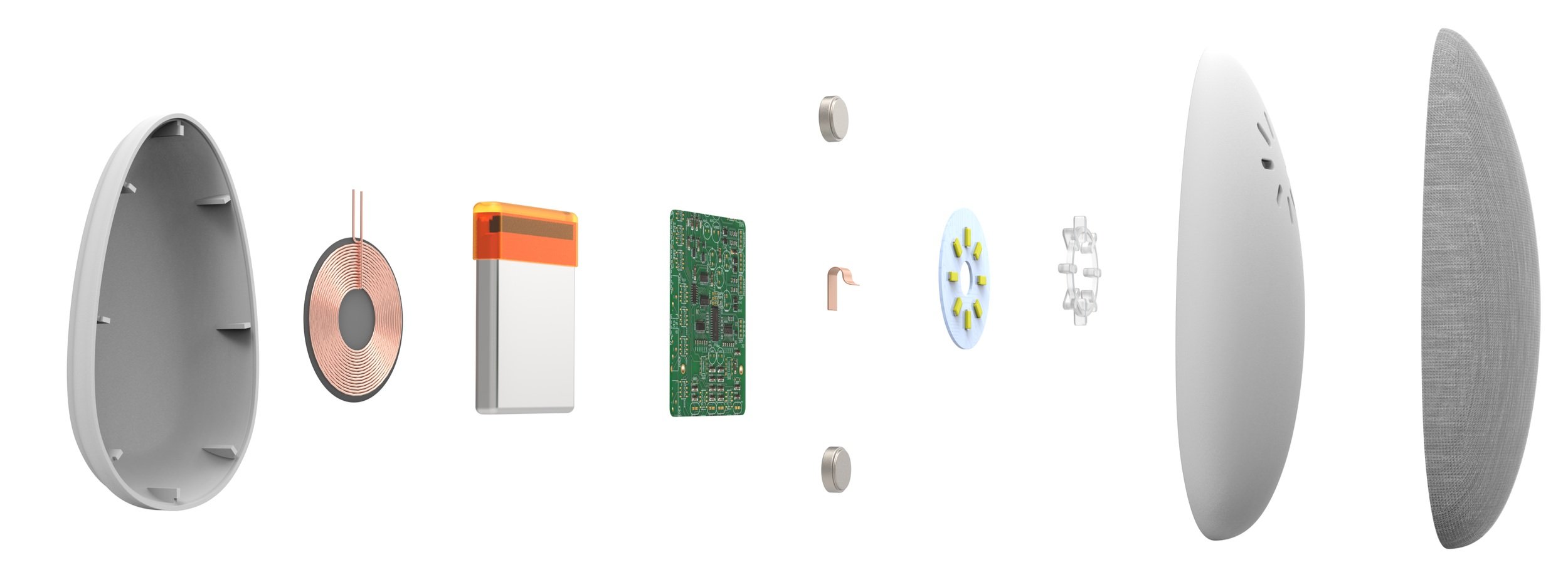
From left: ABS + PC outer shell, Induction Charging Coil, Lithium Polymer Battery, PCB, LRA Haptic Motor(s), Capacitive touch conductor, LEDs, Light Pipes, ABS + PC outer shell, Fabric cover
The final models of the wearable device and handheld tool were made using airbrushed resin and 3D printed parts. Different print settings were explored to get the textures on the back, with a wall thickness that allowed light to shine through when layered with fabric.
Final Products
Aura: wearable to assist with anxiety awareness
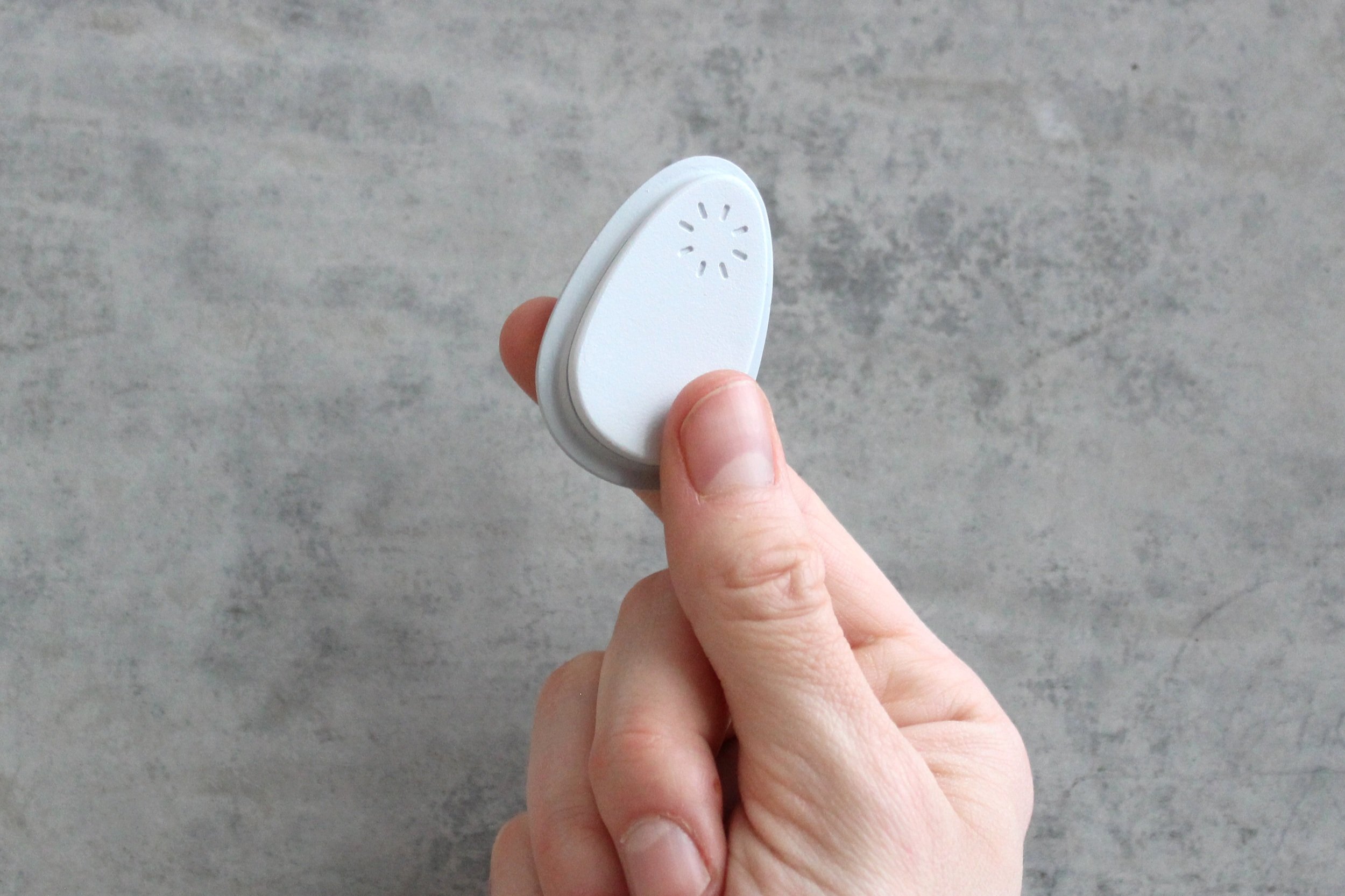
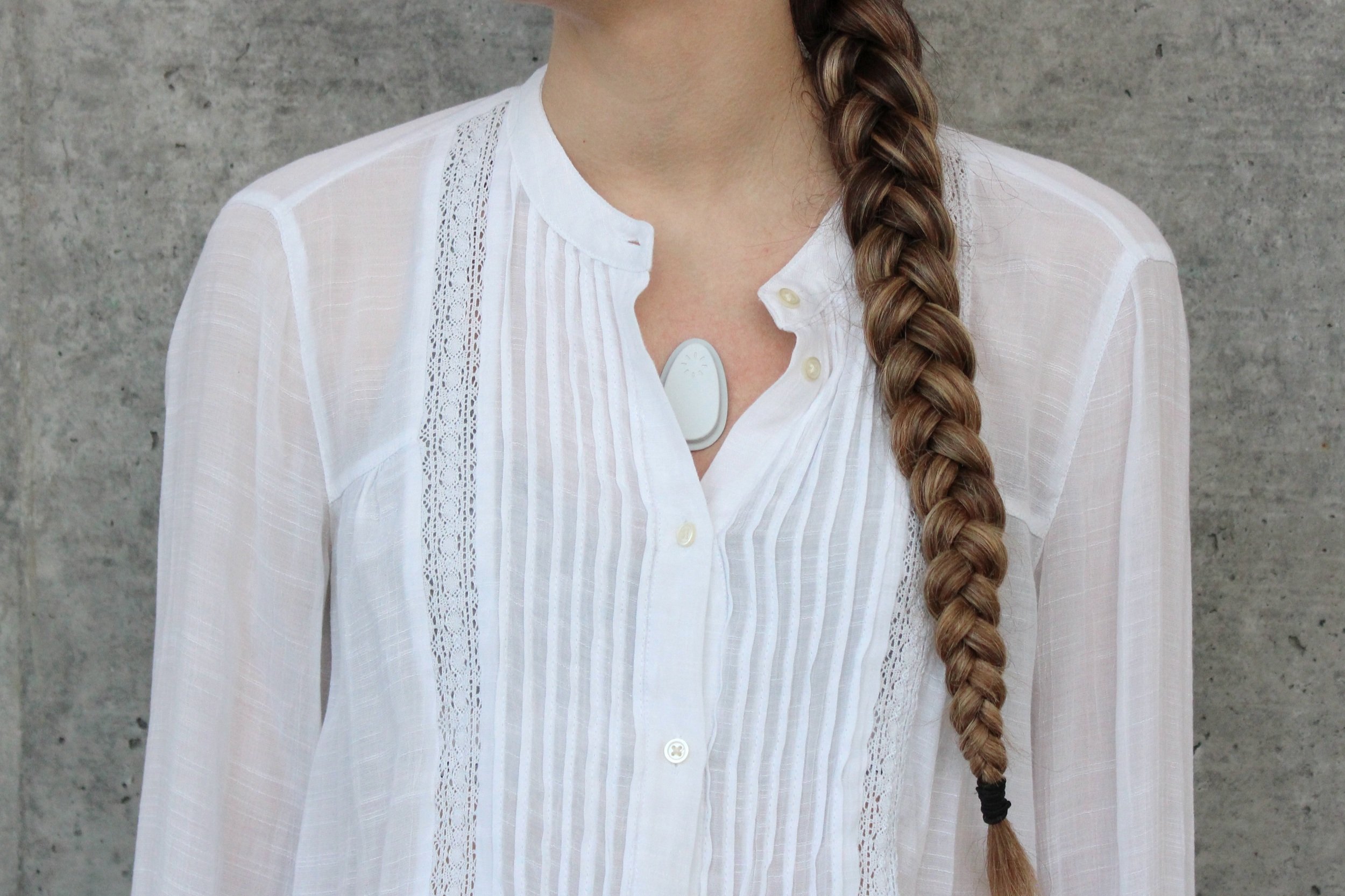
Pebble: Handheld tactile grounding tool

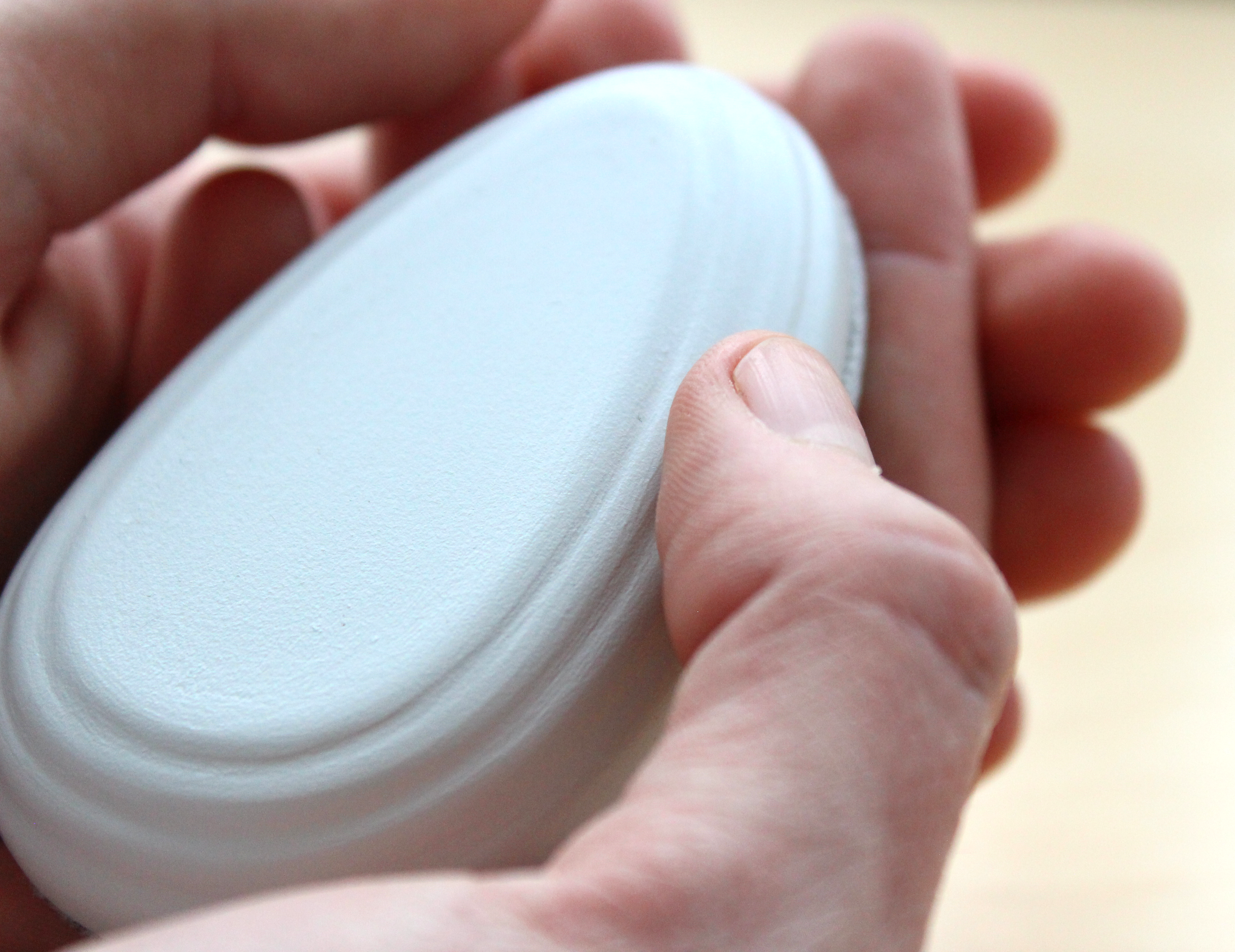
working Mobile Application prototype
This project was awarded the George Lynn Memorial Scholarship, and was also a finalist in the ACIDO Rocket Competition, and ARTS THREAD Global Grad Show.









